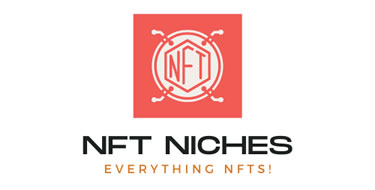NFT ownership can be split in to three different categories:
- Single ownership
- Multi-person ownership
- Fractional NFTs.
When the NFT industry launched, it was single ownership on a one-to-one basis between the NFT and a digital wallet which was used most often, but times have changed and technology has moved forward.
Digital NFT wallets can be accessed by more than one person, and can have security built in to them that requires more than one digital signature to make a change, or to transfer the NFT away.
This together with the concept of fractional NFTs has brought about the potential for multi-person ownership of the same NFT.
An NFT is owned by one wallet address. The wallet, with full user rights, can be accessed by more than one person using the password and seed phrase. Security can be added requiring two signatures to transfer an NFT. Fractional NFTs are divided in equal share of ownership between individual wallets.
Very valuable NFTs, or those used to access tools, software, services or membership program can be ‘fractionalized’.
Fractional NFTs are produced when one NFT is divided into equal parts. This can be split in to two parts or many thousand.
If for example the fractional NFT was split between 1,000 NFT holders, the NFT holder has access and control to 0.001% of the NFT.
With the fractional NFT in their wallet, even just 0.001% ownership, the user can either part own something of cultural significance or have access to a service of some kind.
No one individual can control the NFT, unless all 1,000 fractional pieces are owned by one wallet, but the holder can sell their 0.001% share of the NFT to someone else.
In this article we will investigate the possibilities of multi-person NFT ownership, and which may be best for you.
Sharing a Digital Wallet and NFT
The easiest and cheapest way to share ownership of an NFT is for one individual to set up a digital wallet, such as MetaMask wallet. They would create a password and a seed phrase and share with someone else.
The second user can create a digital MetaMask wallet on their own PC and log in to it using the same seed phrase and password, and have full access to the account.
Both users can view, buy, sell, and transfer NFTs to and from the wallet which is great if both people are very good friends, but this is not a good idea if it is with someone you have met in a Discord community, Reddit or NFT forum. Essentially someone you do not know very well.
Trust is essential otherwise one person can transfer the NFTs away to a personal digital wallet never to be seen again.
A very good friend and I did just this as we wanted to create a consortium and trade NFTs using our collective skills, knowledge, and time.
It works well, and both of us can log in to the MetaMask wallet at the same time, which is helpful.
If this is something you would like to set up with someone but you are not sure you can trust them 100%, then adding security to the wallet is a real necessity.
Adding Signature Control to an NFT Wallet
With rising costs and value of some NFTs, it is not surprising people are getting together with other NFT buyers to create a consortium, buying-hubs or alpha group.
This not only spreads the financial risks and rewards but also allows knowledge to be shared within the group.
These types of alpha groups have existed for decades in the stock market, then they appeared in the crypto market and now they exist in the NFT market.
Although it’s possible to be good friends with someone in the NFT industry, it is more likely you will find a network of people within NFT communities who you would like to partner with. Probably with someone you have never met before.
This makes sharing wallets, passwords, and seed phrases much riskier, regardless of how trustworthy everyone in the group seems to be.
Adding signature control to a wallet will add a layer of security requiring more than one person to act on behalf of the wallet, such as transferring an NFT away.
Multi-signature wallets are available for crypto such as Bitcoin and Ethereum, but in their infancy for NFTs. They are usually from specific providers who creating such wallets for partners and partner groups to store and control their Bitcoin assets effectively and safely.
Although there a couple of startups entering the space, we here at NFT Niches haven’t managed to fully test out any of them, so are unable to recommend any service in particular, but once we can we will create a full review explaining how they work, how to use them, how our tests went and whether they are worth it.
Fractional NFTs
A fractional NFT, as already mentioned, is where an NFT is divided into a number of equal parts.
One person can own more than one of the ‘parts’, but the division is equal.
Fractional NFTs have lots of advantages for both the NFT creator and NFT buyers which depends on the reason the NFT has been fractionalized.
Some of those reasons NFTs are made fractional include high value limited edition art, high value items that are more likely to sell under a split or fractional model rather than singular, and also for the the creator the NFT becomes cheaper to mint and sell as one fractional NFT compared to 5,000 individual NFTs.
These are just a few reasons.
Imagine a highly sought after piece of art that you simply adore and would love to own, but the cost was way too out of reach.
Imagine still being able to have the feeling of ownership, and feel closer to the piece for a fraction of the price, say 1000% cheaper.
A legitimate authentic piece of art can be fractional across 10,000 pieces. This means the original $1million price tag to own, now means piece of the art could be owned for $100.
The part ownership may be tiny, but it is still ownership, and for the buyer a feeling of connectivity with something that may mean a considerable amount to them.
It is far easier and usually faster to sell 10,000 fractional pieces at $100, if demand is high enough, than to one person for a million dollars.
This though of course depends on the value, the NFT artist, and the demand.
Multi-Person NFT Ownership – In Conclusion
Although multi-signature NFT wallets are much in their infancy, fractional NFTs offer the safest option for more than one person owning an NFT.
Sharing seed phrases and passwords with any other person is strongly advised against, even with someone close and trusted to you – as they could by mistake share those details with someone else who transfers away all your NFTs.
Despite the risks this is the easiest and cheapest option available to NFT holders and owners right now.






